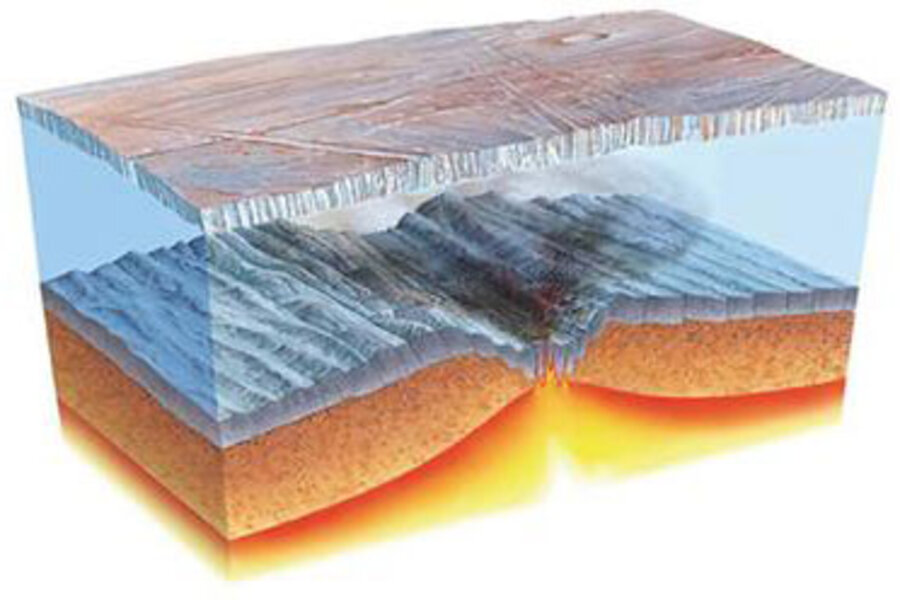How did 'Snowball Earth' end? Scientists blame underwater volcanos.
Some 720 to 640 million years ago, the Earth was catapulted into an intense ice age, dubbed "Snowball Earth" because the planet was likely completely or nearly completely covered in ice. But quite quickly the Earth transitioned from icehouse back to greenhouse.
What triggered that shift back? Underwater volcanos, scientists say in a new study published Monday in the journal Nature Geoscience.
"When volcanic material is deposited in the oceans it undergoes very rapid and profound chemical alteration that impacts the biogeochemistry of the oceans. We find that many geological and geochemical phenomena associated with Snowball Earth are consistent with extensive submarine volcanism along shallow mid-ocean ridges," study lead author Thomas Gernon said in a news release.
It goes something like this. One billion or so years ago there was a supercontinent called Rodinia. The breakup of Rodinia is thought to have caused the Earth to ice over.
The continental breakup kicked off an increase in dissolved minerals being washed into the oceans by rainwater-filled rivers. Those extra minerals altered the ocean's chemistry and reduced atmospheric carbon dioxide, which keeps heat within the Earth's atmosphere. Those conditions thrust the planet into the most severe ice age, further perpetuated by the massive ice sheets reflecting heat from the sun rather than absorbing it.
Although the planet was stuck as Snowball Earth for tens of millions of years, below the ice, volcanism from the shifting plate tectonics may have already been fighting this never-ending icy cycle.
According to the study authors, over those millions of years, the carbon dioxide emissions from underwater volcanos were building up. That accumulation was significant enough to swing the atmosphere into warming, leading to accelerated ice melt.
One mystery scientists have puzzled over about the end of this massive ice age is the production of cap carbonates, thick limestone or dolostone deposits that are associated with the transition away from the Snowball Earth. The formation of cap carbonates relies on warm sea water that is highly alkaline. Other explanations for the end of Snowball Earth cannot provide enough alkalinity, Dr. Gernon writes in an article for The Conversation UK. "For this reason, the source of alkalinity has been one of the greatest enigmas in geology," he writes.
But underwater volcanism could explain the massive cap carbonates scientists have found.
"The lava erupted explosively in shallow waters due to low pressure, producing large volumes of a glassy pyroclastic rock called hyaloclastite," Gernon writes. "As these deposits piled up on the sea floor, chemical reactions between the rock and the largely ice-covered ocean led to massive amounts of calcium, magnesium, silica and, perhaps most significantly, phosphorus being released. Our calculations show that this chemical build-up is sufficient to explain the thick cap carbonate deposits."
And in a dramatic chain of events, this process may have also kicked off the great oxygenation event that led to an explosion of life on Earth.
"It is the high phosphorus levels that are thought to have been the catalyst for the oxygenation of the atmosphere and oceans," Gernon writes. "Phosphorous is one of the key elements of life."
The elevated phosphorus levels produced by the volcanos of Snowball Earth might have triggered the first single-celled organisms that, over time, raised the oxygen levels in the ocean sufficient to trigger further life.
Gernon concludes his article saying, "It’s counterintuitive that one of the most extreme climate states our planet has ever experienced may have actually stimulated the origin of complex life forms. But this does now appear to be the case."






